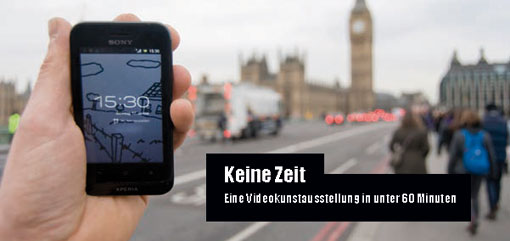
The group exhibition "No time" is designed to allow the viewer to experience a diverse range of video works in under 60 minutes. In addition to generally interested public and cineasts, the exhibition also targets video phobics to experience the possibilities of the moving image. The presented pieces of video art are characterised by their short duration, making the individual videos quite manageable. This makes it possible for visitors to view a large number of different multimedia artistic approaches, and hopefully prevent any kind of reservations and inhibitions, and on top of this, of course, to also be entertaining.
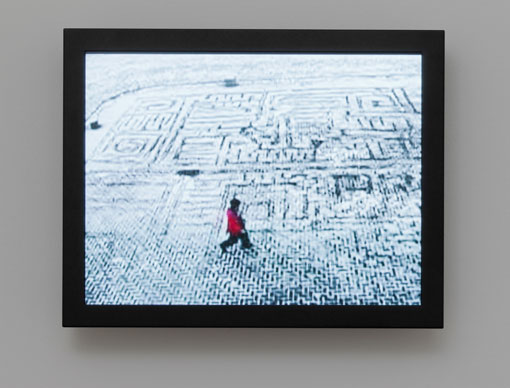
Art is like a clear lake.
The appearance of this lake is simple, clear and beautiful
and one can touch it, just like that; even play with it.
But if you fathom its depth, just a little,
you will find the lake to be very deep and even abysmal.
Drowned...
At the moment I am looking for good gills.
They are extremely important for diving deeper into the inner sphere.
That's why I am here. Someday I will make it there. I hope...
Ankabuta 2004
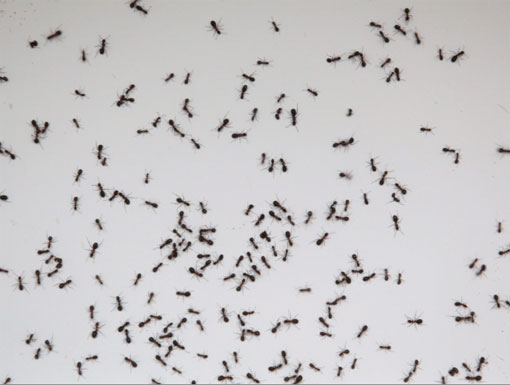
Ants are moving on a white background. In the beginning of the video the ants are very agile. Later their movement slackens. The so called “Ant- War” - the snow on the TV - is transfered into living protagonists. But in difference to the TV-Ants the real ones did not move constantly. The real ants almost stopped moving after they realized that there is no possibility to get out of the frame. Because ants communicate with scents. They tell each other that it is pointless to try to get out. In the mediated representation the ants turn into teeming agents that activate a tight feeling.
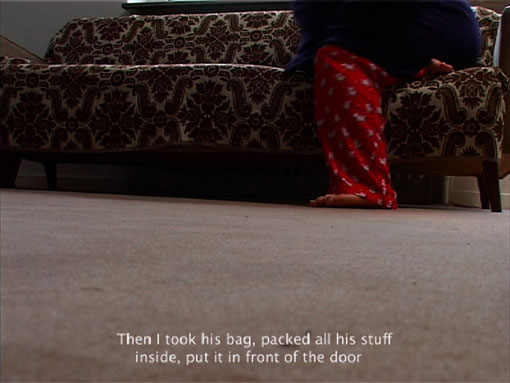
A man and a woman tell about the last day of their relationship.
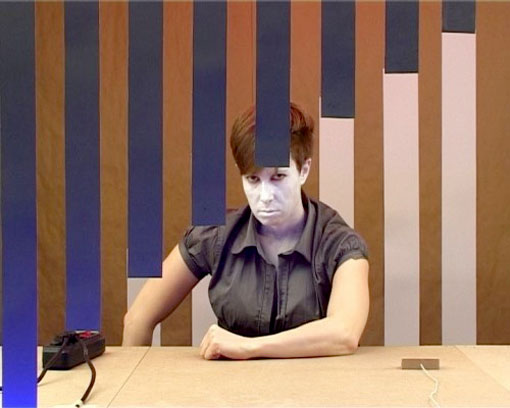
Since the beginning of her video performances (2005), Karin Felbermayr has been involved mainly with the theme of the mask, probing the depths between the aspects of concealment and the infusion with performative content. Her vocabulary has developed continuously over the years and has led to the production of series, which display quite diverse medium-form relations and are close to the traditions of post-ideological, antiauthoritarian practices. As the result of her critical, post-avant-gardist positioning, paradoxes play a decisive role in determining the form of her works.
Person #08 combines conceptually video and performance to video performance. In this work Felbermayr repeatedly performs a choreography of different gestures and poses, which she took from perfume advertisements. It includes the use of several masking techniques: white stage make-up, reflector strips, paper strips, rectangle, technical mask (keying), coloured light, etc.
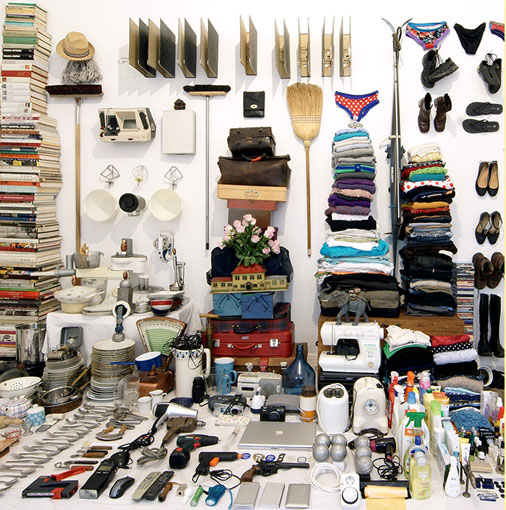
Jeanne Fredac is a wanderer. She is self-taught and follows no preset path, in fact she knows no such path. Instead she tries, plays, experiments in response to what she encounters along the way. Her photographs, paintings, videos and texts explore man’s relationship to his geographical, historical and social spaces. In a world consumed by the relentless quest for answers, regardless of the questions’ relevance and the presuppositions’ accuracy, she wants to get rid of anything that is a given. And she follows that rule herself, refusing to stay put, to remain within the confines of the work for which she is best known: her photographs of abandoned places. Her art, which was originally almost exclusively photography- and text-based, and rooted in an intimate sense of place, is moving outside those borders, adding painting and objects to its cosmogony. It is also becoming more conceptual and taking new roots in a critique of the obvious. Her work has been exhibited in France, Germany, Italy, the USA and Denmark.

The video is on one side a failed attempt to portray the Holy Mother of God and on the other side a self-portrait in a short sequence. Christiane Kuhlmann writes about my work:
“In our culture and society, there are two things which are imbued with a similar magical evidential power, namely a signature and photography. With the one, the signatory uses his written name to guarantee the truth of a statement. No document has validity without this signature which proves that something has truly been held in the hands. Photography works similarly, because it recounts that the object in the image was present in front of the lens for at least a fraction of a second. Photography proves that the person in the image is herself or himself, or that the state of affairs at a specific point in time had a certain appearance and no other. This was explained by Roland Barthes in ‘Camera Lucida’, at a time when digital photography had not even been conceived of. But even today, the notion of the evidential nature of the medium and that of its authenticity, as it were, still remain part of our thinking.”
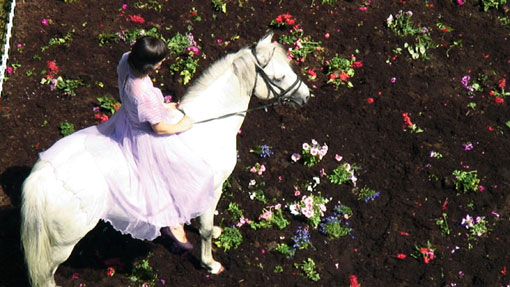
Central to Häckel’s artistic work is her addressing of humanity’s imperfections and deficiencies.In her video Unverblümt she circles around a flowerbed, setting up its destruction in the action that follows.
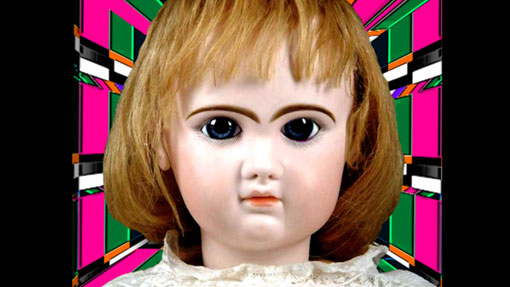
The media artist "Heidi Hörsturz" is working in the fields of audiovisual performance, video and sound art. Her work has been presented at international exhibitions, galleries and art festivals. Her animations, live shows and installations combine contemporary art and modern trash aesthetics. She has published a series of limited soundart vinyls and audio tapes which investigate the connection of noise, artificial overstimulation and constructed visual associations.
One thematic emphasis of her work is the desire of the contemporary society to get more overstimulation in rapidly shrinking attention spans. The search for shocking informations and sexual content and the yearning for a colourful world tries to replace the current depression. The repression of self-reflection with audiovisual brain attacks represents a striving for an artificially constructed world. A digital orgasm that overlays the emotional relations to the natural enviroment.
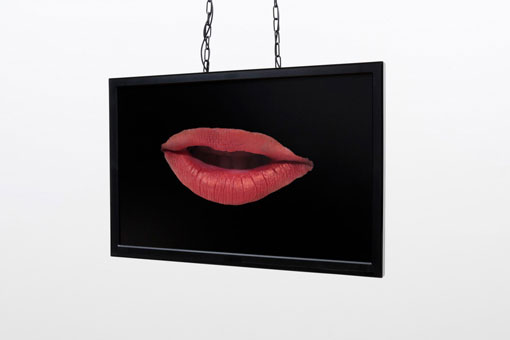
Heidi Klums mit leichten Variationen immer wiederkehrender Satz „Ich habe heute leider kein Foto für dich.“, der das Ende des Modeltraums bedeutet, wurde von Stefan Hurtig als O-Ton gesammelt und collagiert. In der Videoarbeit "Challenge (Leider kein Foto)" von 2012/14 als Endlosschleife geloopt, wirken die Worte wie ein zeitloses Mantra. Das von Hurtig synchron zum Ton gefilmte Bild zeigt ikonisch rote Lippen, die sich vor einem schwarzen Hintergrund bewegen, wobei sich der Monitor, der an einer schwarzen Kette befestigt ist, unentwegt dreht. Ein wunderbares Bild eines in Ketten gelegten Fernsehens, gefangen in seinen eigenen Strukturen!
(Sarah Waldschmitt, Auszug aus dem Katalog TeleGen)

The Space in my work is unsteady and unsettled. Movements, for example in form of fluidity or variability, are always part of the work in spite of the different Media like Animation, Sculpture, and Installation.
Virtual Windy in the animation bring the Structure in the flowing or trembling Movement. Color drops/-trace, Silicone and the integrated Collages in the sculptural works break the strictness of the Structure. Furthermore they disturb the flat, clean, white Surface of the Materials. Thereby I try to make an uneasy and unexpected moment both in my animation and sculpture.
My works grasp architectural and everyday motif. I transform these structures to something organic and liquid. Rational architectural elements become to an irrational and absurd form.
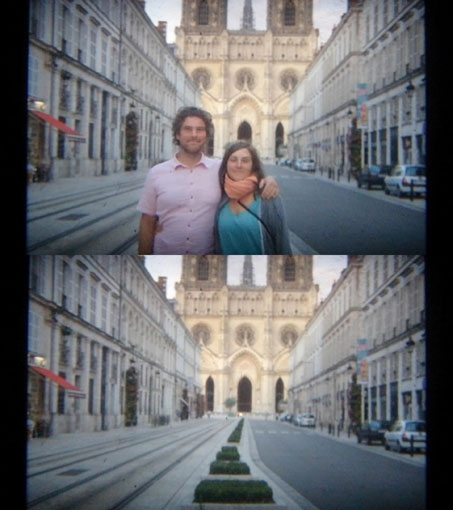
The video-work „Just in time“ was filmed through the viewfinder of an analog reflex camera, while taking a photo using the self-timer. It shows a couple taking self-portaits on a holiday trip. After the exposure (black period) the couple vanished into thin air, which raises many questions:
Where are they? Why are they gone? Were they swallowed by the camera or did the photograph even cut them out of the reality? Or are they just restless and went already somewhere else?
Their disappearance and all the missing information suggest that it is almost impossible to capture one single moment of life.
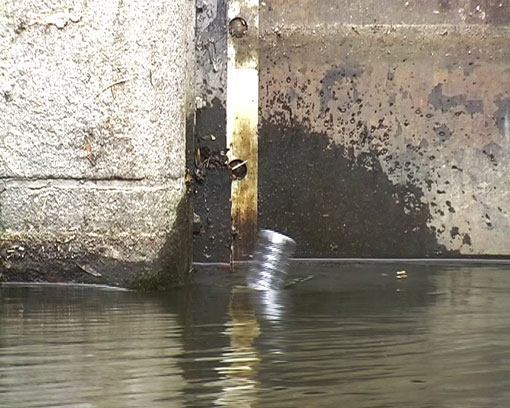
"Sans doute la vie se protège-t-elle par la répétition, la trace, la différance". (J. Derrida, "Freud et la scène de l'écriture" in: L'écriture et la différence, Paris 1967, SS. 293-340; S. 302). The repetition has set up as a key category of the postmodern temporality. The linear and progress-oriented time established with the scientific revolution of the XVIIth Century and afterwards with the industrial revolution gradually lost its explanatory power. But the circular temporality, already delineated by Nietzsche and Benjamin, seems to be in contradiction with our understanding of a linear time experience. And this is in a way true: The time of experience does not allow time travel, the direction of the time arrow points necessarily towards the future. This isn't valid for the time of the perception though. The time of perception has its own laws, which are intrinsically connected with the structure of consciousness. Repetition is here the time figure par excellence. It is the key figure of the temporality of memories and wishes, of déjà-vu and flashbacks, which has no regard for actual events but instead follows its own rhythmical life. And in this rhythmical movement combinations and contaminations of the most various consciousness contents take place, over and over again, so that new meanings are given to past and present experiences. The repetition repeats nothing, it generates a new over and over again instead. (Serena Gregorio, MA of Philosophy)
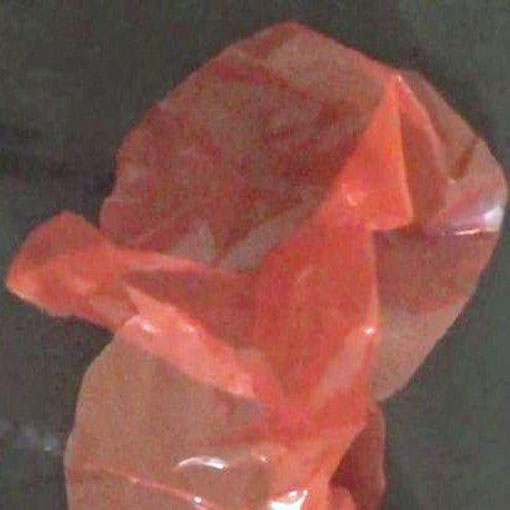
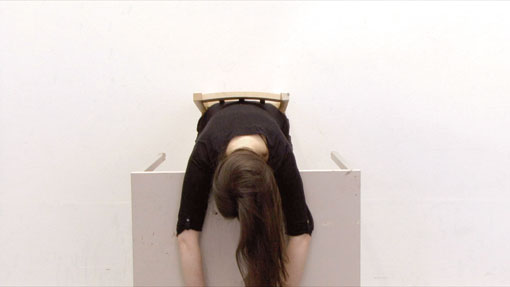
The video for "Happy in bits" from Prinzhorn Dance School pictures the desperate beauty of human effort.

A visuell collage, which look into periods of life. The film focus on the staying of past respectively the come in the present.
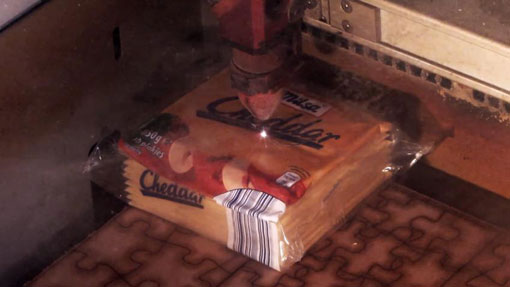
How does the cheese get its holes?
The work Lasercheese (2014) is a humoristic investigation of the question of how the fundamental relation between humans and their food has changed;
the immediate access of hunter-gatherer has given way to a principle of maximlly industrialized processing that extends the so-called foodchain by numerous bloodless links.
The image of a customary sandwich-cheese whose slices - individually packed and flawlessly smooth - are provided with holes in an elaborate and highly
engineered process to create the illusion of natural state highlights the paradox character of this shift.
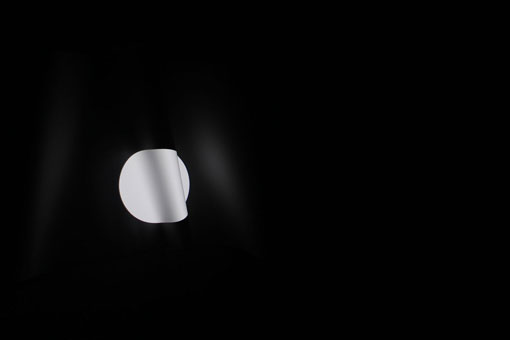
A circle of white light is moving through a pitch-black ambiance along a paper object hanging on the wall. The spotlight wanders through valleys and over mountains, vanishes and appears again. Its shape is constantly changing while it is passing through the scene, adapted to the objects surface.
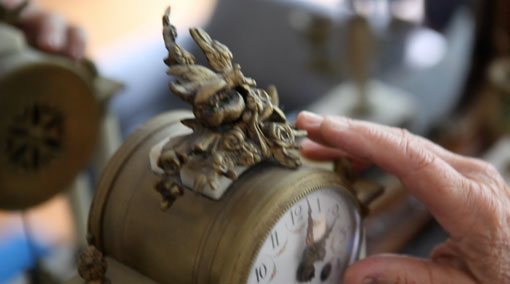
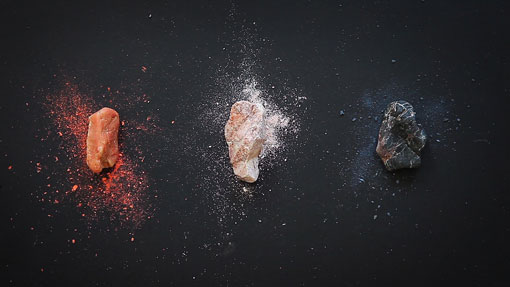
When it comes to galaxies, diversity is everywhere.*
Three different coloured stones look like meteors soaring through space. They are moved across the screen so that one stone always takes the place of another. The different coloured dust they leave behind shows where each has been. These colours entwine against the background to form a drawing made up of a myriad of new colour blends, with each stone still retaining its original colour.
The aspect of something new being created by mixing together certain substances is not only found in the field of astromineralogy; sociology also theorises that diversity comes from living together as equals, and the resulting blend of different religious, cultural and other groups. A diversity which is seen as a basis for knowledge exchange, revitalisation and creativity.
* heic0819 - Science Release / ESA Web Portal / 2008